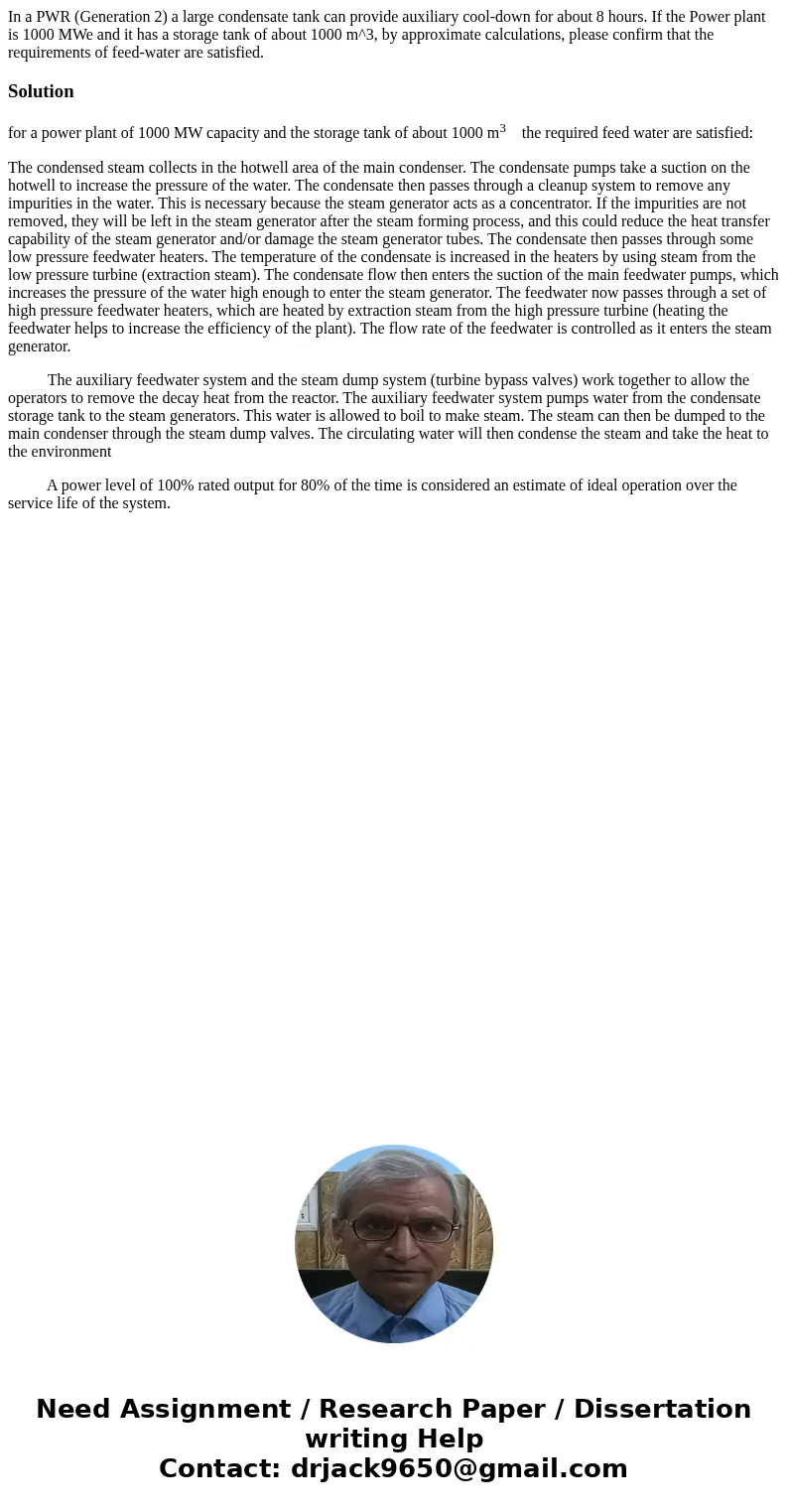In a PWR Generation 2 a large condensate tank can provide au
Solution
for a power plant of 1000 MW capacity and the storage tank of about 1000 m3 the required feed water are satisfied:
The condensed steam collects in the hotwell area of the main condenser. The condensate pumps take a suction on the hotwell to increase the pressure of the water. The condensate then passes through a cleanup system to remove any impurities in the water. This is necessary because the steam generator acts as a concentrator. If the impurities are not removed, they will be left in the steam generator after the steam forming process, and this could reduce the heat transfer capability of the steam generator and/or damage the steam generator tubes. The condensate then passes through some low pressure feedwater heaters. The temperature of the condensate is increased in the heaters by using steam from the low pressure turbine (extraction steam). The condensate flow then enters the suction of the main feedwater pumps, which increases the pressure of the water high enough to enter the steam generator. The feedwater now passes through a set of high pressure feedwater heaters, which are heated by extraction steam from the high pressure turbine (heating the feedwater helps to increase the efficiency of the plant). The flow rate of the feedwater is controlled as it enters the steam generator.
The auxiliary feedwater system and the steam dump system (turbine bypass valves) work together to allow the operators to remove the decay heat from the reactor. The auxiliary feedwater system pumps water from the condensate storage tank to the steam generators. This water is allowed to boil to make steam. The steam can then be dumped to the main condenser through the steam dump valves. The circulating water will then condense the steam and take the heat to the environment
A power level of 100% rated output for 80% of the time is considered an estimate of ideal operation over the service life of the system.

 Homework Sourse
Homework Sourse